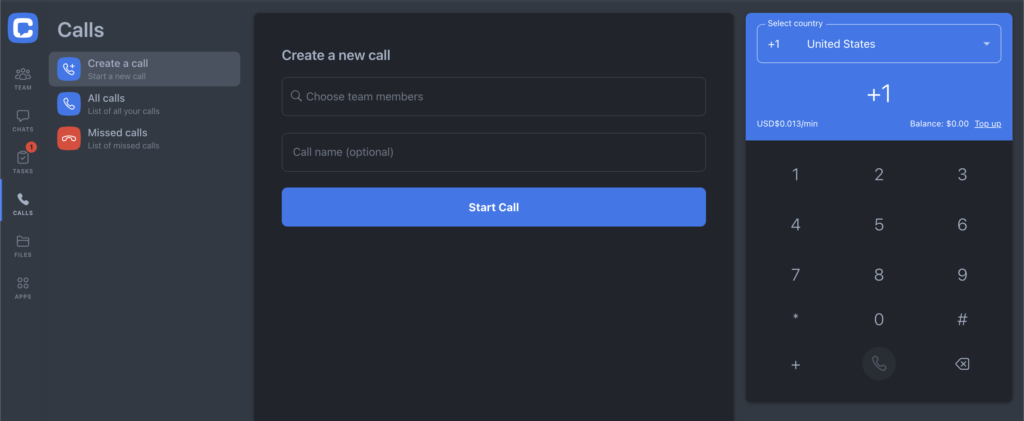Communication is essential to a productive workplace. It encourages teamwork, increases engagement, and boosts employee satisfaction. But communicating effectively can be a challenge. Even when people speak the same language, things can be misunderstood. That’s because communication isn’t just about speaking or writing words – it’s about understanding the intent, tone, and nuance behind them.
That’s because people use different communication styles. These styles often vary according to personal preferences, cultural backgrounds, and workplace dynamics. Communication style describes the way we share information. Some people are straightforward, while others rely on subtlety to communicate their thoughts and feelings. Understanding these differences and nuances allows us to interpret and deliver messages accurately.
In this article, we’ll discuss direct vs. indirect communication styles. We’ll also provide tips to help both direct and indirect communicators improve their communication skills. By exploring both styles in depth, we aim to shed light on how each can be used effectively in the workplace to foster clearer, more productive exchanges.
What is direct communication?
Direct communication conveys the intended message explicitly and straightforwardly with no hidden contexts or meanings. In other words, you say what you mean and mean what you say. People with this style prefer clear and actionable information. They get to the point quickly and expect others to do the same.
There are two primary benefits of direct communication. First, it ensures clarity, leaving little room for ambiguity, misunderstanding, or misinterpretation. Second, it facilitates honesty and builds trust.
The drawback of direct communication is it can lead to conflict or confrontation, especially when the speaker delivers the message without tact. It is also considered impolite, depending on the cultural context.
Key attributes of the direct communication strategy include:
- Clarity and brevity – messages are explicit and usually short, minimizing confusion.
- Assertiveness – ideas and requests are expressed with confidence.
- Transparency – builds trust by reducing hidden meanings.
- Efficiency – saves time since no “decoding” is required.
- Risk of bluntness – may be perceived as harsh in cultures where indirectness is the norm.
Examples of direct communication
Brevity and clarity are the primary characteristics of direct communication. The examples below illustrate how straightforwardly conveying messages eliminates ambiguity and misunderstanding.
- I need this report done by Thursday to complete the analysis on time (Set a clear deadline with a rationale).
- Ensure you back up the data by the end of the day (Gives clear and specific instructions).
- Your performance has improved (Directly expresses direct praise).
- I appreciate your help with training (Expressing gratitude for a specific action).
- The assignment is outside the scope of my job description (Defines limits).
- I disagree with the assessment as it stands (Expresses disagreement without being confrontational).
- Here is my view on the matter (States a personal opinion).
- Your presentation was engaging (Directly expresses positive feedback).
- Your presentation needs more supporting data (Expresses constructive feedback).
- I don’t understand this section of the report (Directly seeks clarification).
- This request requires immediate attention (Highlights urgency).
- I need your help with this technical issue (A direct request for assistance).
- This is what I need from each member (Outlines specific expectations).
As you can see, direct communication can lead to more transparent and productive interactions in the workplace.
What is indirect communication?
Indirect communication doesn’t rely on words alone to convey messages. It uses nonverbal communication cues such as facial expressions and tone of voice to express the underlying meaning behind the words. Research by Dr. Albert Mehrabian suggests that 55% of communication is nonverbal, which explains why tone and body language play such a crucial role.
The listeners must read between the lines to interpret the intent. People who use this style tend to avoid conflict or offense. Indirect communication is often valued in high-context cultures such as Japan, China, or many Middle Eastern countries, where preserving harmony is more important than blunt honesty.
The benefit of indirect communication is it allows people to navigate difficult conversations. It encourages social harmony by avoiding confrontation and is the appropriate speech form in some cultural contexts.
The disadvantage of the indirect style is the increased potential for miscommunication and frustration, especially when the listener doesn’t pick up nonverbal cues.
Key attributes of the indirect communication strategy include:
- Subtlety and nuance – messages are softened to reduce tension.
- Diplomacy – prevents conflict and keeps conversations collaborative.
- Context dependence – meaning relies heavily on shared understanding.
- Flexibility – makes it easier to give refusals or suggestions politely.
- Relationship focus – prioritizes harmony and long-term cooperation.
- Risk of misinterpretation – listeners may overlook the intended message.
Examples of indirect communication
Subtlety and nuance are the hallmarks of indirect communication. The examples below illustrate how context and nonverbal cues give meaning to messages.
- Everyone’s input is valuable and enriches our meetings (Encourages engagement without singling individuals).
- I could learn a lot from your presentation approach (Hints at wanting help by complimenting skills).
- I prefer emails because they allow me to track conversations (States preferences without directly rejecting other methods).
- Unfortunately, my current schedule is full (Indirectly declines invitations or additional work by implying limited availability).
- The project’s scope is extensive and will require additional help (Requests support without directly asking someone).
- Could you elaborate? (Diplomatic way to ask ‘why?’).
- Some people might find the wording in the document offensive (Highlights an issue without direct criticism).
- That’s a different way of looking at things (Indicates disagreement without confrontation).
- I like your ideas, but I think additional sources would strengthen your article (Indirect constructive feedback).
- Given the complexity of the work, would more training be helpful? (Suggests skills deficiency without implying incompetence).
- The approach is good, but have you considered other options? (Non-confrontational way to propose improvement).
Indirect communication helps communicators navigate complex and dynamic interpersonal relationships, creating and maintaining a harmonious work environment.
Difference between direct and indirect communication
We’ve touched on a few differences between direct and indirect communication. Now, we’ll dive into the specifics of these differences and the distinctions between the two types of communicators.
Word choice
Direct communicators use concise and precise words to express their thoughts or feelings, prioritizing clarity. If they don’t want to do something, they simply say ‘no.’ They value brevity and honesty in their speech.
Indirect communicators choose their words carefully to avoid giving offense. For instance, they don’t say ‘no’ to something they don’t want to do. Instead, they’re overly polite and say, ‘Unfortunately, I’m not able to do that at the time.’ They may also employ hedging phrases like ‘perhaps’ or ‘maybe’ to soften the refusal.
Interpretation
Direct communication requires little interpretation. The intended meaning is in the words. When your supervisor says, ‘Come to my office,’ it’s clear what they want you to do.
Indirect communication leaves room for misinterpretation. If your boss says, ‘Come by my office when you have time,’ it’s unclear when the action should happen. The listeners must analyze context and nonverbal cues to interpret its meaning. In some cases, if the message is not perceived as urgent, the listener may not feel compelled to take action.
Use in cultures
Direct communication is customary in low-context cultures like Western countries. These places are culturally diverse and emphasize individualism. The heterogeneity doesn’t allow for contextual assumptions. So, the speaker is responsible for conveying clear communication.
The indirect style of communication is customary in high-context cultures like Asian countries. These places are culturally homogeneous and emphasize community. The homogeneity enables people to understand shared expectations around behavior. The listener is responsible for correctly interpreting the message based on the speaker’s social status, facial expression, or body language. This reliance on context can sometimes lead to misunderstanding if the listener is unfamiliar with cultural cues.
Ideal use in conflict resolution
Different communication styles are suited for various conflict situations to avoid unhealthy work culture. Direct communication is best when you require swift resolution. You’ll get help faster by asking for it than by stating your needs and hoping someone volunteers.
On the other hand, an indirect approach is best for managing emotionally charged disputes. Let’s say you’re an HR officer attempting to resolve a conflict between coworkers. Using indirect speech allows you to remain neutral while settling the problem. It helps avoid escalating tensions, especially when parties are not yet ready to confront the issue directly.
Ideal use in written communication
Unlike face-to-face or phone interactions, nonverbal cues are impossible to recognize in written communication. You can come across as rude or overly authoritative if you’re a direct person. That’s why direct written communication is suitable for task-oriented or instructive messages. There’s little chance of offending someone when explaining how to do something.
Indirect communicators already use polite language. So the language they use in written communication compensates for the loss of non-verbal cues. Since this style of communication aims to avoid offending or creating conflict, it’s best suited to writing messages that require empathy to be understood. In writing, the extra courtesy often makes all the difference in maintaining relationships and showing respect.
While the basic principles of direct and indirect communication styles apply across different workplaces, it’s also important to consider the generational influences that shape these communication preferences. Let’s explore how different generations tend to approach direct and indirect communication in the modern workplace.
How сommunication styles differ across generations
Communication styles can be deeply influenced by the generational lens through which we view the world. Each generation brings its own set of values, technologies, and experiences that shape how they interact in the workplace. Understanding these unique preferences is essential to fostering smoother, more effective conversations.
Baby Boomers grew up in an era where face-to-face communication was paramount. They prefer direct, clear, and formal exchanges and often appreciate the structure and professionalism this brings. For them, indirect communication can sometimes feel like a barrier to getting things done quickly and efficiently.
Often seen as the bridge between the analog and digital worlds, Gen Xers are comfortable with both direct and indirect communication styles. They tend to prefer email or written forms of communication and appreciate getting to the point but with some room for nuance. Their approach is balanced — they value clarity but understand the need for flexibility.
Millennials — the digital pioneers — are incredibly adaptable communicators, often using a wide range of platforms from text to social media to keep conversations going. They’re comfortable with a mix of direct and indirect communication, but especially value transparency and a tone that encourages collaboration. They want clarity without sacrificing empathy or inclusivity.
Gen Z, who have grown up with smartphones and social media, expect fast, clear, and concise communication. While they tend to be direct in their interactions, they also prioritize inclusivity and respect, often preferring a supportive tone. Directness doesn’t mean bluntness to Gen Z; it’s about getting to the point while maintaining understanding.
Understanding and valuing generational communication preferences is essential to fostering a more productive and harmonious workplace. By recognizing how each generation prefers to communicate — whether through directness or a more subtle approach — we can avoid misunderstandings and strengthen collaboration. Effective communication isn’t just about the words we use, it’s about how our messages are perceived. This sets the stage for a discussion of the key channels of direct communication that can help bridge these generational gaps and improve workplace interaction.
Important channels of direct communication at work
Channels of communication are the methods employees use to disseminate information to managers and colleagues. These tools facilitate team collaboration, feedback collection, and relationship building.
Using the right channel to convey your message is vital to employee engagement and productivity.
Here are the primary communication channels organizations use.
Face-to-face communication
In-person conversation is an incredibly effective communication channel in the workplace. It uses verbal and nonverbal cues to convey messages, improving the quality and efficacy of communication.
For instance, it can be challenging to gauge intent using digital channels. However, message intent is apparent when you can see the speaker’s body language and hear their voice. The immediate feedback makes face-to-face communication ideal for complex and sensitive conversations.
Communication tools
In this increasingly digital age, communication via instant messaging tools is just as important as face-to-face communication in the workplace. Communication tools provide employees with unparalleled convenience. With them, employees can convey important messages even when they’re not in the same physical space as the colleague they’re talking to.
It can indeed be harder to determine message intent with communication tools than in face-to-face communication. The good news is that these technologies have evolved so that users now have at least an easier time discerning message intent than before.
Mobile apps for chatting
Compared to emails, mobile apps for chatting are a fairly recent invention. However, they have already become a staple in the workplace. 55% of workers have said that they prefer using mobile phones for work purposes than desktop phones.
The statistics aren’t surprising. Apart from the convenience mobile apps provide, they also enable real-time conversations. With most of these platforms, you can also easily share important documents with colleagues and check previous conversations.
Emails
Email is the most widely used written communication channel for business. It is asynchronous, meaning communication isn’t in real-time. You can generate a digital business card and include it in your email signature along with other information and documents reaching multiple recipients, making it ideal for large-scale communication. Moreover, like mobile apps for chatting, email enables you to track conversations and shared files.
Audio calls
Audio calls convey verbal messages in real-time. That makes the channel ideal for time-sensitive communication without being physically present. Furthermore, conferencing features enable multiple people to participate in the call, facilitating faster decision-making. While phone calls eliminate body language cues, the listener can still interpret the message using tone of voice.
Most phone calls happen on mobile devices, with 6.84 billion smartphone users globally. However, several communication tools offer VoIP (voice of internet protocol), enabling users to call using internet connections. With Chanty, you can take this further – we support VoIP for internal calls and also allow you to connect with landline numbers when needed, giving teams more flexibility in how they communicate.

chanty.com
Users can call team members or leave voice messages.
Video conferences
Video calls are the remote work environment’s answer to synchronous communication.
unsplash.com
It uses verbal and non-verbal communication and accommodates multiple participants, facilitating connection and efficient collaboration. That’s not all. Video conferencing platforms have file-sharing and call-recording capabilities, enabling you to track files and conversations.
In theory, you can use any channel to share information. However, consider the message’s purpose, complexity, and urgency for greater efficiency.
For example, face-to-face meetings and video calls are more effective than emailing training materials when training new hires. You can gauge comprehension and answer questions. If you’re resigning, it’s best to use email or business letters. Messages that require immediate attention or response should be conveyed via phone calls.
You also have to consider the recipient of the message. For instance, you may use WhatsApp Web to chat with your friend who works in HR. However, when requesting time off, it’s best to use email.
Documents
Business documents are formal channels of written communication. They contain official messages and serve as a single source of truth. So, if there are questions about your B2B strategies or business policies, employees can refer to the relevant documents for clarification.
Business documents include contracts, HR handbooks, business plans, financial reports, meeting minutes, board resolutions, and more.
Tips for people with direct communication style
Direct communicators value honesty and transparency. However, they risk sounding inconsiderate and bossy. It’s vital to be polite and professional in the workplace. So, here are a few tips to be more pleasant without giving up your communication style.
- Opt for face-to-face channels: Non-verbal communication allows the listener to interpret the message and feedback in the correct context, minimizing conflict or confrontation.
- Engage in active listening: It involves mindful and focused attention to the meaning or intent behind the words.
- Work on your delivery: Pay attention to your word choice and nonverbal cues. You can be approachable and diplomatic without compromising the intent of your message. A smile and emoji go a long way.
- Consider your audience: Consider, for instance, their cultural norms to be an effective communicator.
- Tell people your communication style: Letting others know you’re a direct person saves them the trouble of overthinking your message.
As you can see, you don’t have to give up your communication style to thrive in the workplace. Just incorporate kindness to become a more empathetic leader or colleague.
Tips for people with indirect communication style
Indirect communicators value harmony and diplomacy. However, it’s usually at the expense of message clarity and causes frustration with direct speakers. So, here are a few tips to get your message across effectively:
- Consider your audience: Like direct communicators, indirect communicators should consider the listener’s context when communicating. Understanding their style will help you adjust your approach for clearer interaction.
- Work on your delivery: Practice verbal clarity and confident body language. Stand straight, use a firm tone of voice, and make eye contact. Make sure your posture and gestures reflect confidence, which will reinforce your message.
- Encourage people to ask for clarifications on your statements: This way, you can prevent them from misinterpreting your indirect statements. Clarification promotes better understanding and avoids potential misunderstandings.
- Seek feedback on communication style: Learn how others view your communication style and identify communication barriers. Then make the necessary adjustments. Feedback will give you insight into areas for improvement and help you connect more effectively.
- Be direct when necessary: Learn which situations direct communication is most beneficial. Know that direct or specific questions aren’t necessarily a sign of aggression but rather express confusion or points for clarification.
On that last point, remember, that direct communicators respect direct speech. They view indirect communication as evasive (at best) or dishonest (at worst). Therefore, using direct speech with them is a sign of respect and trustworthiness for them.
Conclusion
Clear communication is essential for an effective and productive work environment. However, people express themselves in various ways. Some are direct, while others prefer a more subtle approach.
The debate between direct and indirect communication styles isn’t about one being superior to the other. Each style has its strengths. Direct communication is ideal when quick action or clarity is needed, helping to avoid misunderstandings. In contrast, indirect communication can be more effective in delicate situations or complex interpersonal dynamics, as it helps reduce the potential for conflict.
Generational differences also influence how people use direct or indirect communication. For instance, Baby Boomers and Gen Xers often favor a direct approach, prioritizing efficiency and transparency. Millennials and Gen Z, however, tend to adopt a more indirect style, emphasizing emotional sensitivity and nuance, particularly in challenging conversations. Recognizing these generational preferences can enhance collaboration and understanding.
Being aware of the distinctions between direct and indirect communication allows you to interpret messages more accurately. It also enables you to adapt your approach based on the situation – whether it requires straightforwardness or more subtlety. This awareness helps you respond more effectively and create a more cooperative work environment.









Add comment